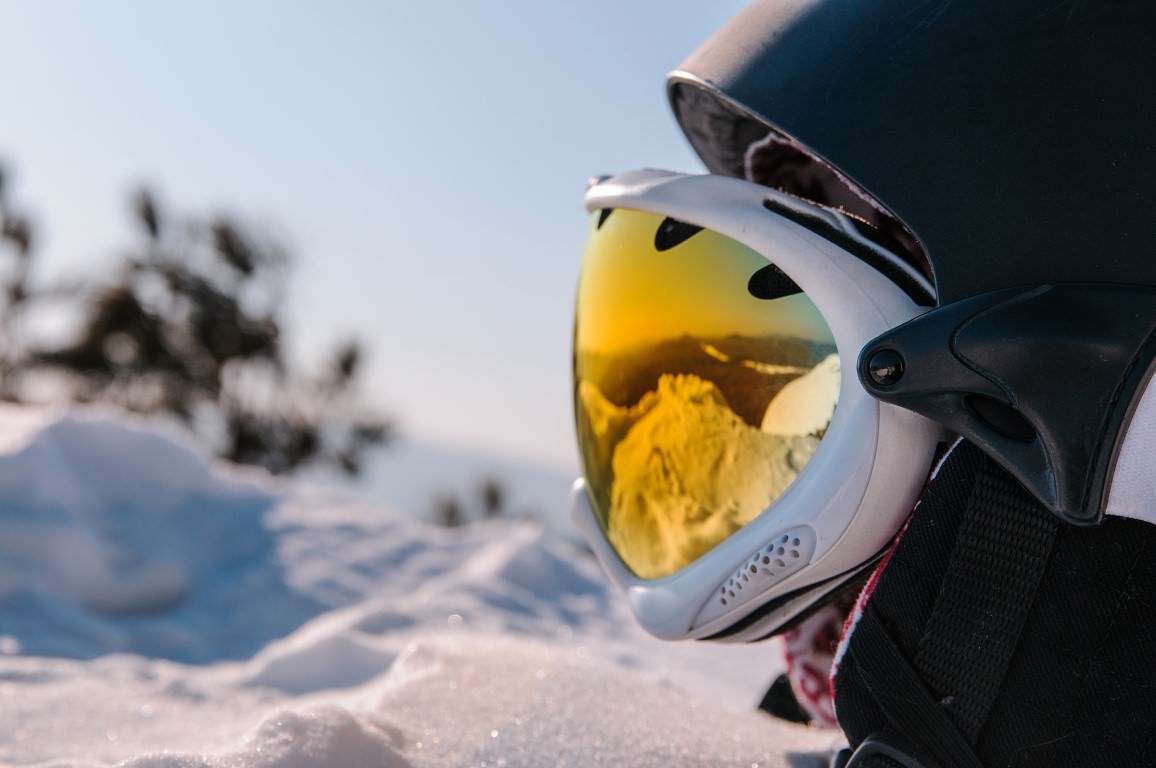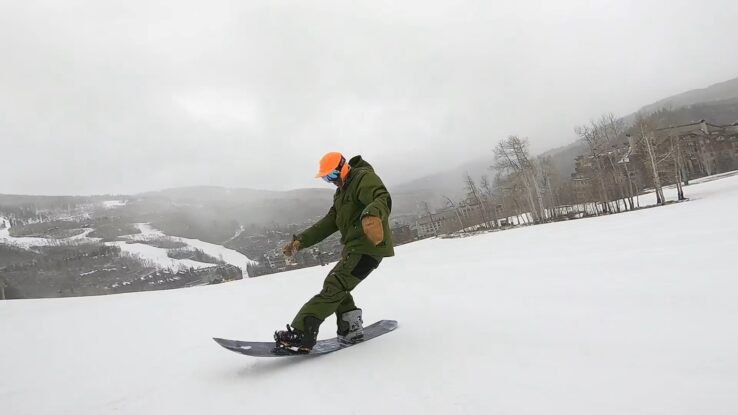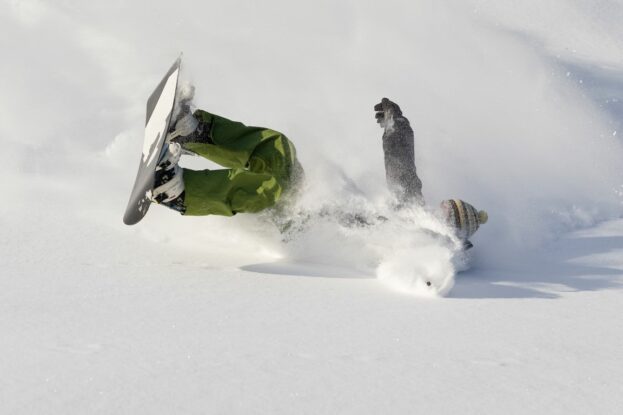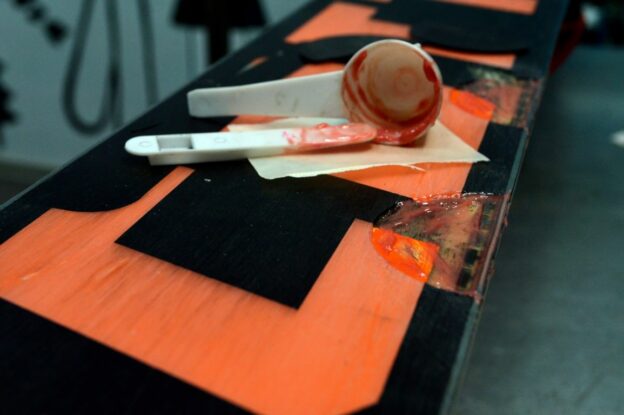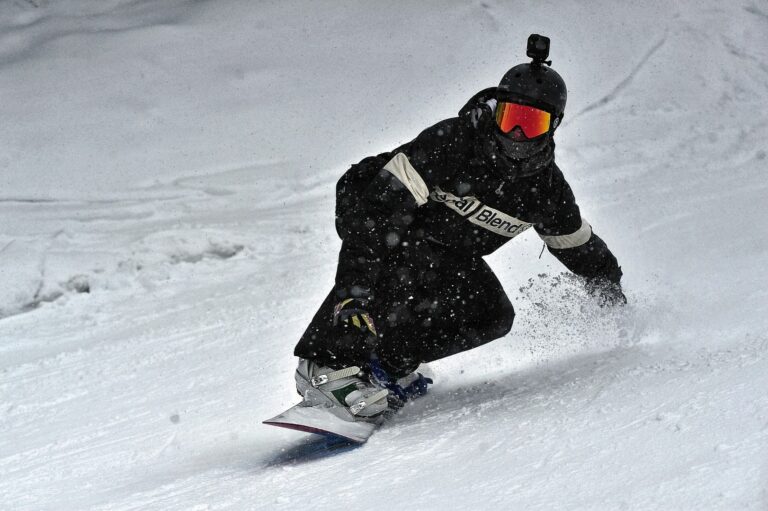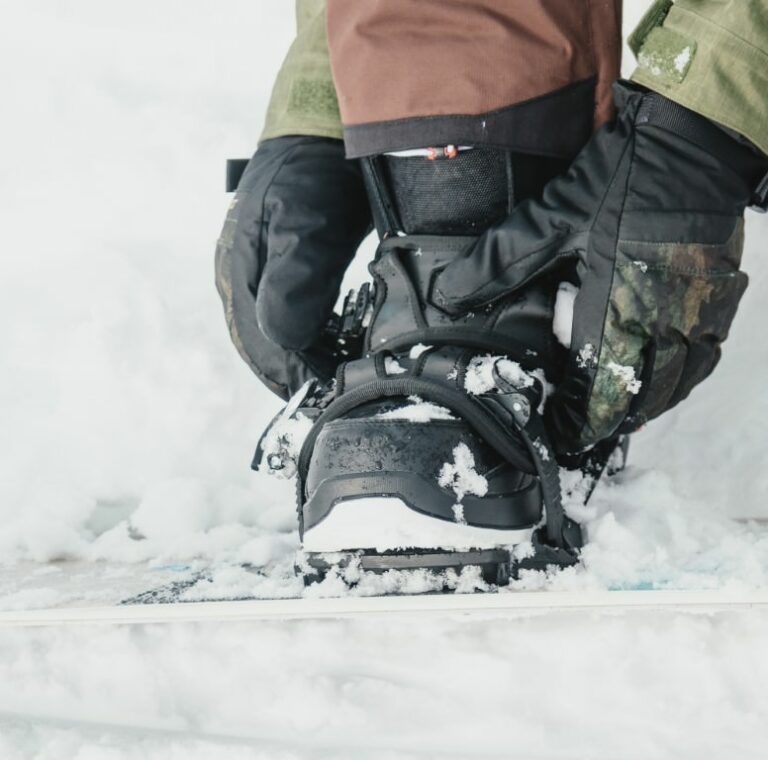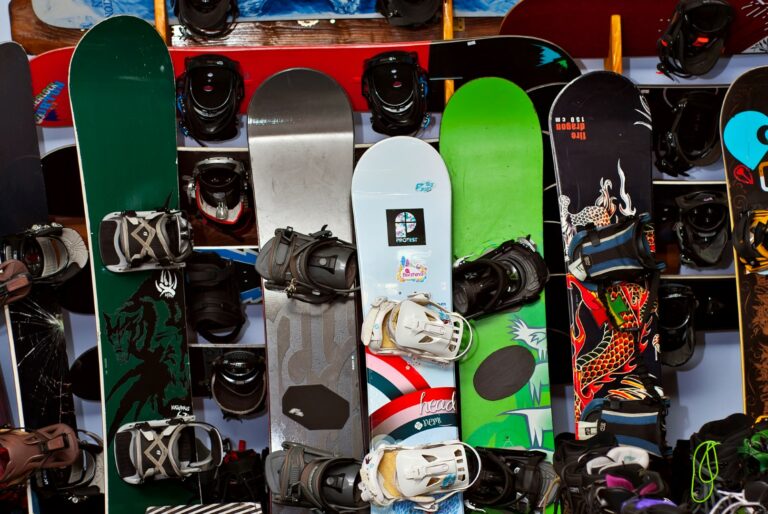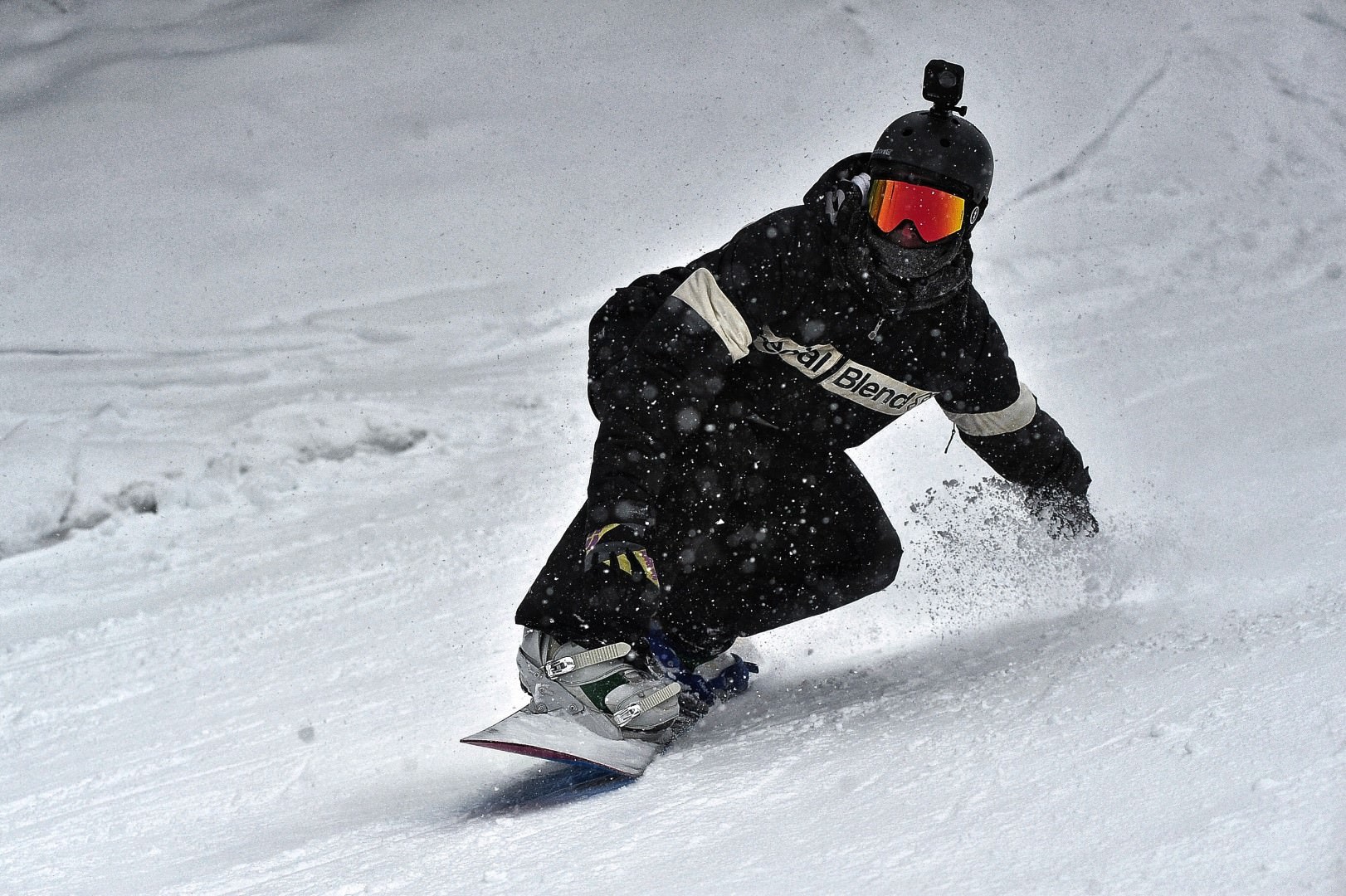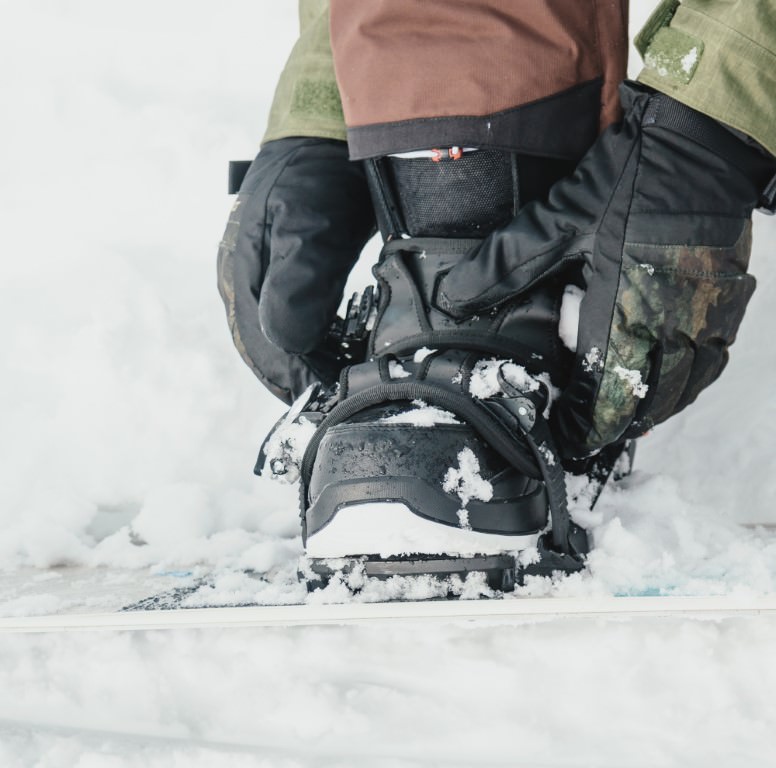Lens Shape Showdown: Cylindrical vs. Spherical Lenses
Ski and snowboard goggles come in two lens shapes, cylindrical or spherical; each has its own advantages and disadvantages:
Cylindrical Lenses:
- Design: These lenses curve horizontally around your face while remaining flat vertically. The shape resembles a cylinder cut in half.
- Profile: Cylindrical lenses have a lower profile and a more traditional, retro look due to their flat vertical plane. They look really cool.
- Field of Vision: While providing a good horizontal view, their vertical field of vision is less than spherical lenses.
- Optical Quality: There can be more glare and distortion at the peripherals due to the difference in curvature. However, lens technology advancements have significantly improved cylindrical lenses’ optical quality.
- Cost: Cylindrical lenses are less expensive than their spherical cousins, making them a budget-friendly choice.
Spherical Lenses:
- Design: Spherical lenses curve both horizontally and vertically, mimicking the curvature of your eye.
- Profile: These lenses have a bubbled appearance, providing a modern look. They look good, but not as cool as cylindrical lenses.
- Field of Vision: Spherical lenses offer a wide field of vision in all directions, enhancing peripheral vision both horizontally and vertically.
- Optical Quality: The consistent curvature of spherical lenses reduces glare and distortion, providing superior optical clarity.
- Cost: More expensive than cylindrical lenses. But many skiers and snowboarders (myself included) find the enhanced field of vision and optical clarity are worth paying for.
Frame Size Matters: Finding the Perfect Goggle Fit
Correctly fitting goggles are more comfortable and improve your vision. They come in four sizes: kids, small, medium and large with a degree of crossover between.
Kids goggles are generally for young children under twelve. Small frames fit children from around ten up to teens and adults with small faces. While medium and large frames cater to, yes you guessed it, people with medium or large faces.
Helmet Compatibility Considerations
Your goggles also need to fit your helmet. You want to avoid a gap – known as a “gaper”, which is a bit of an insult towards beginners – between the top of the googles and the front of your lid. Ideally, you also want the goggles to extend the full width of your helmet and to match the curve. Your goggles should not push down on your nose, or tilt your helmet backwards.
As a beginner you’ll have a rental helmet, so try it on with your goggles. Remember, you don’t have to accept the first helmet the rental store provides.
Anti-Fog Solutions: Ventilation and Lens Coatings
Fogging goggles can be a frustrating experience. Understanding why goggles fog and how to prevent it can help keep your vision clear.
Choose the Right Goggles:
- Anti-fog Coatings: Most goggles come with anti-fog coatings applied to the inner lens. This coating minimizes the surface tension of water droplets, causing them to spread out evenly over the lens rather than cluster and form fog.
- Dual-pane Lenses: Just like double-glazed windows, dual-pane lenses create a thermal barrier that reduces fogging. The air trapped between the two lenses insulates the inner from the cold outer, preventing condensation.
- Ventilation: Proper ventilation is crucial for preventing goggle fog. Look for goggles with vents along the top and bottom of the frame. The vents allow air to circulate and moisture to evaporate, reducing fogging.
Care for Your Goggles:
- Avoid touching the inner lens: The inner lens of your goggles is where the anti-fog coating resides. Touching or wiping the inside of your goggles can damage this coating and make your goggles more prone to fogging.
- Dry goggles properly: After a day on the slopes dry your goggles at room temperature (ideally a warm room that isn’t damp). High heat can damage the anti-fog coating, and storing them while damp will encourage fogging next time.
On the Slopes:
- Keep moving: The faster you move the more the air flows through the vents to keep your goggles clear.
- Remove snow: If/when you faceplant in fresh snow remove as much from around your goggles as you can. Leaving snow, particularly around the vents, adds moisture and increases fogging.
- Removing goggles: If you take your goggles off don’t put them inside a damp sweaty helmet, or your sweaty forehead. Putting them on top of your helmet is fine, as long as your lid is not wet.
- Defogging: When you fog up, put them inside your jacket and the warmth may help moisture to evaporate – this won’t work if you are sweaty. A hand dryer is a good option, or removing them and putting them near heat for a while will dry them out.
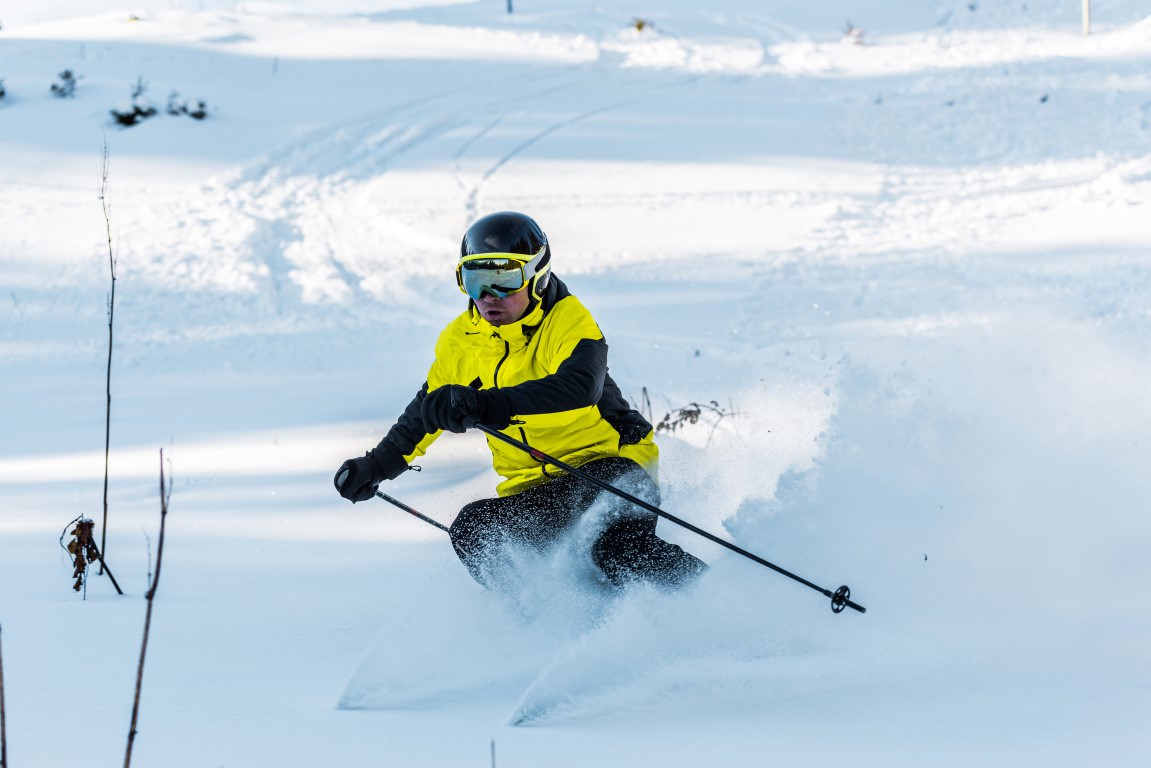
Lens Tints and Visible Light Transmission (VLT)
Goggle lens color isn’t just about aesthetics. The various tints have different benefits, and affects the Visible Light Transmission (VLT) percentage, which refers to the amount of light that passes through the lens.
Some goggles also use a 0-4 category system with the higher number letting less light through. All of the below lens tints are just a guide, darker or lighter tint versions also influence the VLT percentage which are displayed on lens packaging.
Clear Lenses:
- Category 0
- VLT: Very High (80%-100%)
- Clear lenses are best for extremely low light, night skiing, or artificial light. They provide maximum light transmission to ensure the best possible visibility in these conditions.
- Do not provide enough eye protection in bright conditions.
Yellow, Gold, Amber, and Green Tints:
- Category 1
- VLT: High (45%-85%)
- These colors are excellent for low-light, overcast, or snowy conditions as they enhance contrast and depth perception. They filter out blue light, allowing other colors to come through sharper and brighter.
- In all day sunny conditions, you may get tired eyes with these tints.
- Yellow, in particular, enhances contrast in flat light conditions, making it easier to see bumps and dips in the snow.
- Gold, amber, and green tints also work well in moderate light conditions.
- Orange, Rose and Blue Tints:
- Category 2
- VLT: Medium (25%-65%)
- Rose, orange and blue lenses offer a decent level of versatility, performing well in both low and medium light conditions and without causing too much eye fatigue on bluebird days.
- Orange lenses often sit between category 1 and 2, they perform well in lower light conditions adding depth while being okay in brighter weather.
- Rose tints increase contrast, helping you see more clearly in a variety of conditions, and are particularly effective in clouds or fog.
- Blue lenses help reduce glare, especially in sunny or partly cloudy conditions.
Brown, Grey, and Copper Tints:
- Category 3
- VLT: Low (10%-35%)
- These dark tints are ideal for bright and sunny conditions. They reduce glare and eye strain on sunny days while providing excellent contrast.
- Brown and copper lenses enhance contrast and visual acuity while reducing eye fatigue.
- Gray lenses are neutral and do not enhance contrast or colors, providing a natural view of the landscape.
- These colors are not good in low or flat light conditions or shadows.
Darker Browns, Greys, and Coppers:
- Category 4
- VLT: Low (5%-15%)
- The same as category 3 but darker lenses that allow less light through.
- Used for high altitude glaciers and intense bright light.
- Very poor visibility in flat light, cloud or shade.
The best lens color varies with the conditions. If only buying one pair look at category 1 or 2 for the most versatile lenses.
Interchangeable Lenses: Adapting to Changing Conditions
Interchangeable lenses allow you to adapt to changing light and weather conditions. These goggles often come with two lenses: one for low light and one for bright light. Look for goggles that offer an easy and secure method of changing lenses, such as magnetic fixings or simple clips.
Photochromic Lenses: Adapting to the Light
Photochromic lenses offer a dynamic solution for changing light conditions. These lenses contain special molecules that react to UV light, darkening in bright conditions and lightening in low light. Usually, they range from category 1 to 3 or 2 to 4.
This adaptive technology eliminates the need to swap lenses as conditions change. While photochromic lenses are more expensive than regular lenses, their versatility makes them a great investment as you’ll often face varying light conditions.
UV Protection: Shielding Your Eyes on the Slopes
UV protection is a must in ski and snowboarding goggles. Even on cloudy days, harmful UV rays can damage your eyes. Ensure your goggles offer 100% UV protection.
Over-the-Glasses (OTG) Goggles: A Guide for Eyeglass Wearers
If you wear prescription glasses, OTG goggles are specifically designed to fit over your specs. Make sure you try them on with your glasses to ensure they fit.
Additional Lens Features to Look Out For
Other lens features to consider:
Polarized Lenses:
- Function: Polarized lenses have a special filter that blocks intense reflected light, reducing glare. This is particularly useful in sunny conditions where the light reflects off the snow, creating a blinding glare.
- Benefits: By reducing glare, polarized lenses enhance comfort and reduce eye strain, allowing you to see more clearly.
- Considerations: Polarized lenses can make it difficult to see the glare from icy patches. And it is harder to see smartphone or digital camera screens due to the way the polarization filters light.
Mirrored Lenses:
- Function: Mirrored or “flash” lenses feature a reflective coating on the outside of the lens that reduces light transmission. This means that more sunlight is reflected away from your eyes, making mirrored lenses a great choice for bright, sunny days.
- Benefits: A mirror coating can be combined with any lens tint, providing the benefits of both the tint and the mirrored effect. Plus, they have a distinctive, cool look that many skiers and snowboarders desire.
- Considerations: Keep in mind that mirrored lenses show scratches more easily than normal lenses. So their lifetime is reduced unless you are very careful.
Top Snowboarding Goggle Brands
Here are some of the top goggle brands for skiing and snowboarding, each with its unique strengths and popular products.
Smith Optics:
- Known for their innovative lens technologies and durable designs.
- Top Product: Smith I/O MAG, featuring Smith’s MAG lens change system and ChromaPop lens technology for enhanced color and clarity.
- Website: Smith Optics
Oakley:
- Famous for their High Definition Optics (HDO) technology and wide field of view.
- Top Product: Oakley Flight Deck, offering unparalleled peripheral vision with a rimless lens design.
- Website: Oakley
Dragon Alliance:
- Appreciated for their Lumalens technology and stylish designs.
- Top Product: Dragon X2, featuring frameless design and swiftlock lens change system.
- Website: Dragon Alliance
Anon Optics:
- Renowned for their Magnetic Facemask Integration (MFI) and SONAR lens technology by ZEISS.
- Top Product: Anon M4 Toric MFI, offering a toric lens technology and seamless facemask integration.
- Website: Anon Optics
Giro:
- Recognized for their expansive field of view and lens tints optimized for snow conditions.
- Top Product: Giro Contact, showcasing a snapshot magnetic lens interchange system and VIVID lenses developed with ZEISS.
- Website: Giro
Julbo:
- Renowned for their photochromic technology, offering lenses that adapt to changing light conditions.
- Top Product: Julbo Aerospace, featuring a SuperFlow system that allows the lens to move away from the frame for better ventilation, and a REACTIV photochromic lens that adjusts to the light.
- Website: Julbo
Spy Optics:
- Known for their patented Happy Lens technology, which enhances color and contrast while reducing eye fatigue.
- Top Product: Spy Legacy, a model with a large field of view and Lock Steady quick-change lens system, its Happy Lens technology enhances color and contrast.
- Website: Spy Optics
Zeal Optics:
- Recognized for their commitment to sustainability and innovative lens technologies.
- Top Product: Zeal Portal, equipped with Rail Lock System for easy lens changes, and available with Automatic+ photochromic lens technology, which adjusts to light in real-time.
- Website: Zeal Optics
Frequently Asked Questions
What Are Some of the Top Ski and Snowboarding Goggle Brands?
There are many goggle brands out there, and most produce good eyewear. But the most well known brands, such as Smith, Oakley, Dragon, Anon, Julbo, Spy, Zeal and Giro consistently deliver high-quality goggles to suit many different needs.
Each brand has its unique strengths, whether it’s innovative lens technology, superior fit, or stylish design. But as with anything you pay more for the bigger names than less well known brands, such as Panda or Sungod, who also sell very good goggles.
What Is the Average Lifespan of Snowboarding Goggles?
The lifespan of goggles varies depending on the quality of the goggles, how often they are used, how well they are cared for and luck. High-quality goggles that are properly maintained can last for hundreds of days of skiing or snowboarding.
Regular cleaning, proper storage, and avoiding scratches (both through luck and guile) all extend the lifespan of your goggles. When your goggles start to show signs of wear, such as scratches that impair visibility or deteriorating foam, it’s time to replace them.
Do I Need Different Goggles for Snowboarding and Skiing?
In short, no. Goggles can be used interchangeably for both snowboarding, skiing and other snow sports. The most important aspect is that they fit well, are comfortable and suit the conditions in which you’re using them.
What Are the Pros and Cons of Polarized Snowboarding Goggles?
Polarized goggles have a special filter that blocks reflected light, reducing glare. This is great in snowy environments where intense sunlight reflects off the snow.
However, polarized lenses can reduce the visibility of icy patches, as the glare from ice is no longer seen. Also, a polarized lens can make it difficult to see your smartphone screen. Normally you can see your phone vertically, but horizontally it will appear black as the lens blocks that light.
Can I Wear My Contact Lenses Under My Snowboarding Goggles?
Yes, you can wear contact lenses under your snowboarding goggles. This is a common choice for many skiers and snowboarders who require vision correction.
Some people find the dry and cold conditions uncomfortable when wearing contacts. If so, consider OTG (over-the-glasses) goggles that are designed to fit over prescription eyewear. Alternatively, some goggle brands, such as Sportviz offer prescription inserts that can be fitted directly into the goggle frame.
Conclusion
When buying ski or snowboard goggles, the most important thing is they fit your face and helmet. You’ll want to ride in conditions that suit your lenses, which is why many skiers and snowboarders have more than one pair or interchangeable lenses. If buying just one pair, look for a VLT of around 50 to 60% with rose, gold or amber tint for the most versatility.
